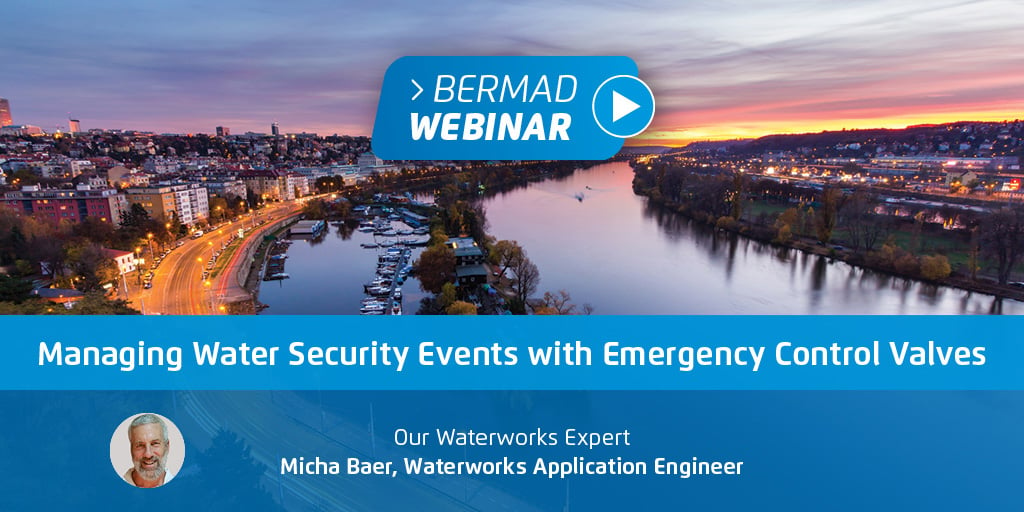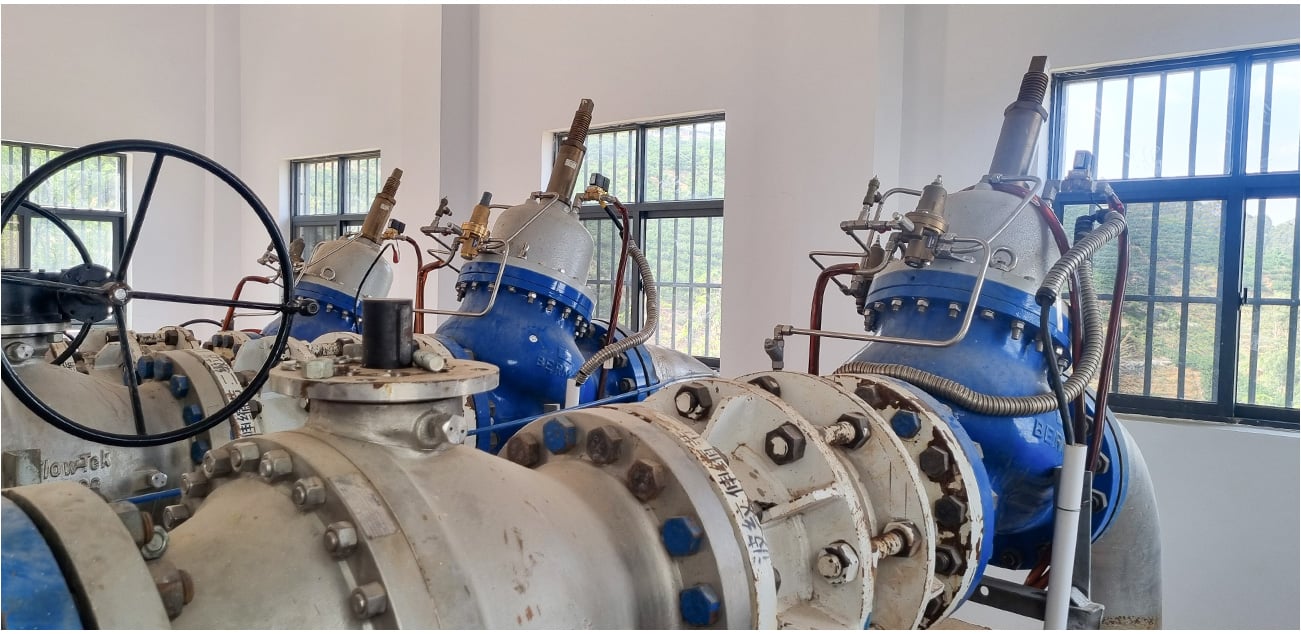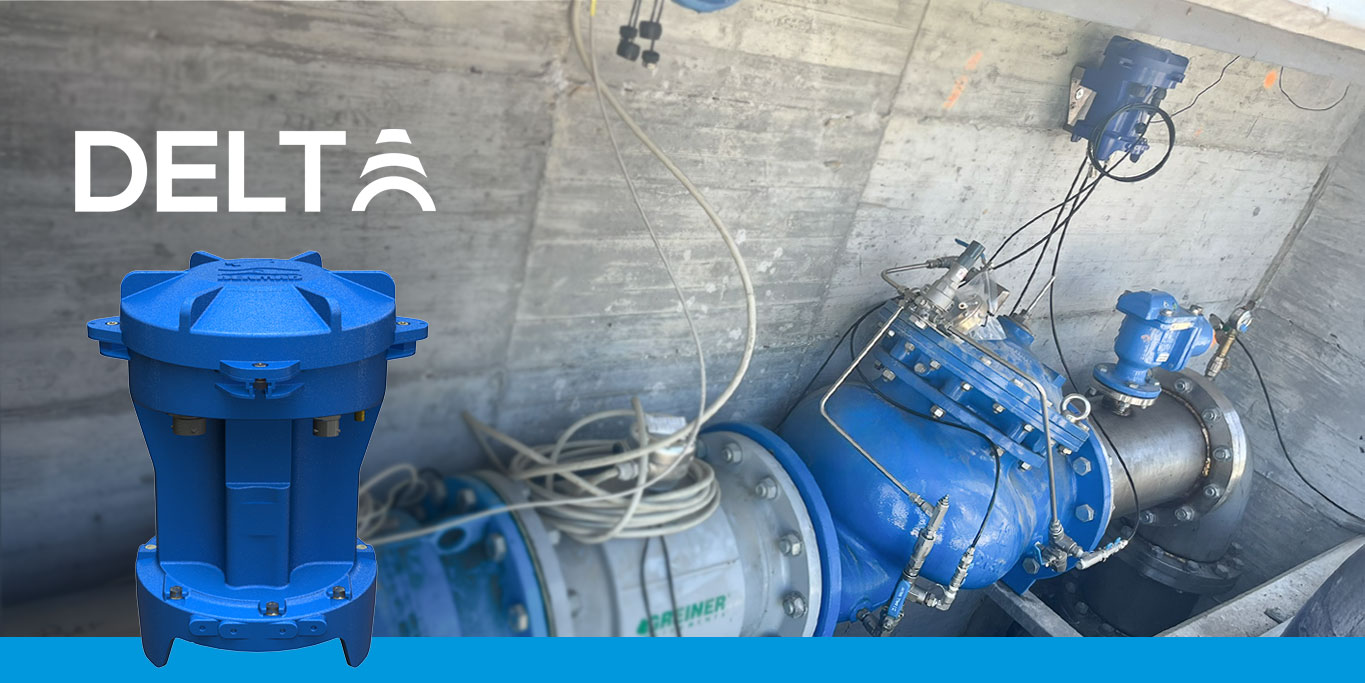In a recent BERMAD webinar, “Managing Water Security Events with Emergency Control Valves,” Micha Baer, our Waterworks Application Engineer, talked about the types and causes of water security events, the measures that need to be taken to minimize the risks, and how emergency control valves can be used to manage such events.
<<Missed the webinar? Watch Now>>
During the webinar, questions about emergency control valve operation, handling water security events, and valve maintenance were addressed:
Q: What flow sensing elements does BERMAD use?
A: BERMAD's leading emergency control valve is the BERMAD WW-790-M Burst Control Valve. The high sensitivity pilot on the control loop senses the pressure drop across the burst control valve itself. During normal operation, the valve is fully open. The high flow during a burst event causes an increase of the pressure drop across the valve up to the set point of the high sensitivity pilot, which then introduces pressure into the valve’s control chamber, thereby closing it.
Other versions of BERMAD’s WW-790-M Burst Control Valve may use other ways of sensing the increased flow, such as an orifice plate, pitot tube, flow meter, downstream pressure drop, and more.
Q: How do these valves behave during normal operation and what is the headloss due to friction or local losses?
A: During normal operation, the emergency control valves are fully open to minimize pressure drop, also known as headloss or local friction loss. The pressure loss is a function of the flow and the capacity (KV) of the emergency control valves. Most of the time it will be very low and will typically not be higher than 1.0-1.2 m at maximum operating flow.
Q: Is the guideline for burst flow (i.e.,) 25%-30% dictated by a design manual, good engineering practice or BERMAD practice?
A: The guideline for the burst flow to be 25%-30% above maximum operating flow is to avoid premature closing of the emergency control valve due to tight sensing tolerance. This is best explained with an example, using the formula dp=(Q/KV)0.5.
Maximum Operating Flow = 1,150 m3/h
Burst Flow = 1,150*1.25= 1,450 m3/h
KV = 3,300
At Maximum Operating Flow: dp=(1150/3300)0.5=0.12 bar
At Burst Flow: dp=(1450/3300)0.5=0.19 bar
Q: Do emergency control valves have to be associated with water hammer control valve events?
A: No, emergency control valves close in response to an event, while surge anticipating valves open in response to an event. Emergency control valves provide protection against waste of water, flooding and flood damages, spread of contamination into the supply system, etc.; surge anticipating valves open to release excessive energy related to pump stoppage.













